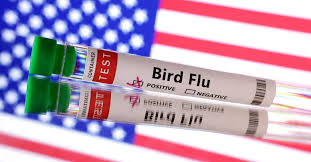The first severe human case of bird flu in the US has shown mutations, according to a report from the Centers for Disease Control and Prevention (CDC). The H7N9 virus, a subtype of avian influenza, was identified in a patient who fell seriously ill in early 2022.
Data presented by the CDC highlighted genomic alterations in the virus, suggesting that it has become better adapted to human infection. The H7N9 strain is known to have the ability to rapidly mutate, leading to concerns over a potential pandemic if it emerges in a highly transmissible form.
The CDC explained that the patient had travelled to China, where H7N9 is considered endemic. They had been in areas with live poultry, a known risk factor for transmission of avian influenza. Following the patient’s diagnosis, US health authorities have intensified surveillance for H7N9 and other avian influenza viruses.
In their report, the CDC underlined the need for increased awareness and vigilance concerning the spread of avian influenza. A CDC spokesperson noted, “We continue to work closely with our partners in public health, agriculture, and beyond to monitor these viruses and protect human health.”
While H7N9 is not currently spreading widely in human populations, the CDC emphasized the importance of continued monitoring due to the virus’s propensity to mutate. Both national and global health authorities remain on alert for any signs of a broader outbreak.
The source of the virus in the patient has not yet been determined conclusively. The CDC said it is undertaking an ongoing investigation. However, initial indications suggest that infection was likely due to exposure to infected poultry or contaminated environments during their travels.
The development and continual mutation of infectious diseases, such as the H7N9 avian influenza, emphasizes the need for ongoing public health surveillance and broad collaboration among scientific communities globally. As highlighted in the CDC’s report, understanding the threat of these viruses is imperative for preparing for and potentially preventing future pandemics.
Last modified: December 27, 2024


